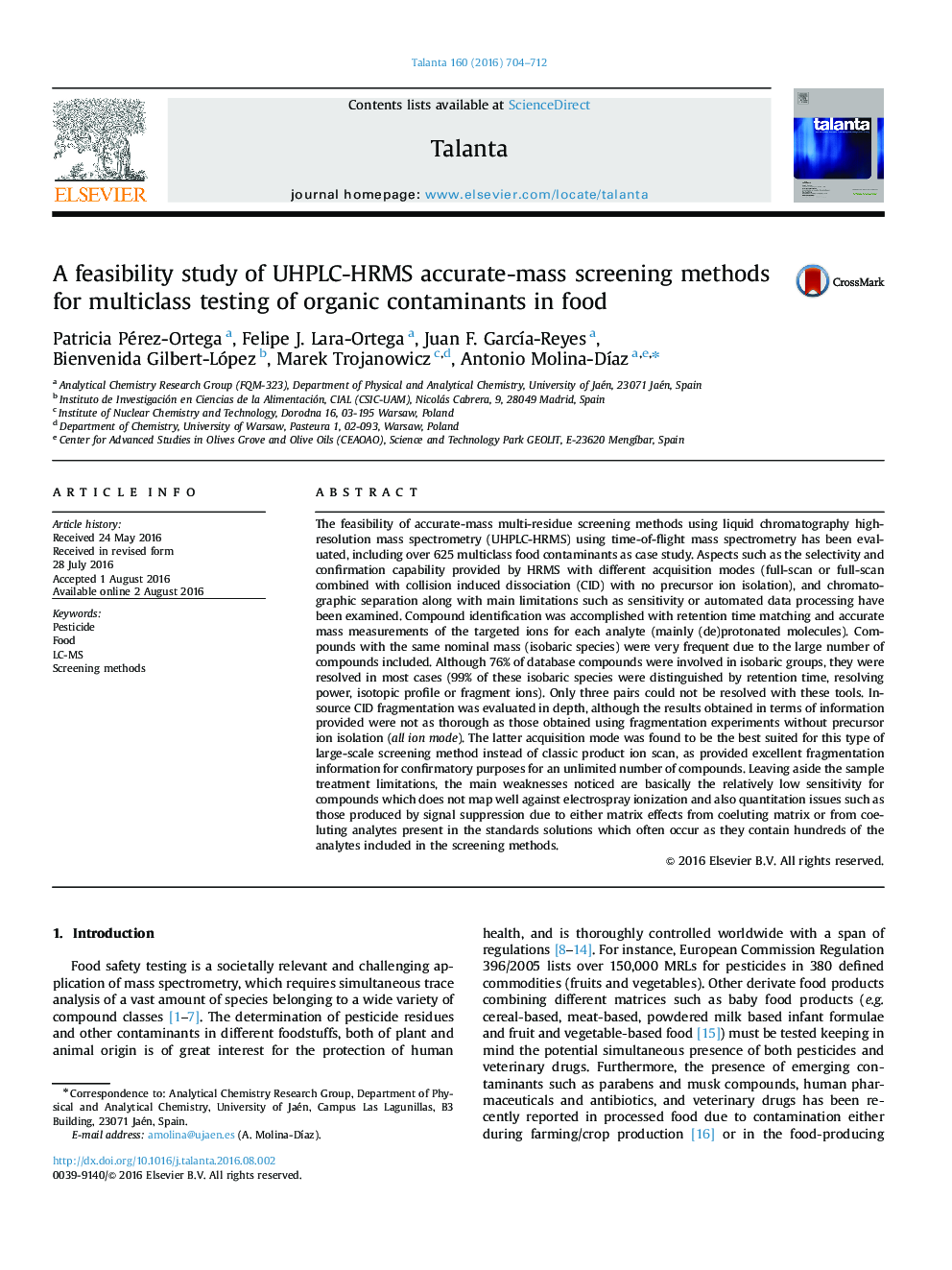| Article ID | Journal | Published Year | Pages | File Type |
|---|---|---|---|---|
| 1243310 | Talanta | 2016 | 9 Pages |
•Main parameters affecting the performance of LC-HRMS screening methods studied.•Over 600 pesticides, veterinary drugs, mycotoxins and perfluoroalkyl species included.•Fragmentation and confirmation capabilities assessed with different acquisition modes.•CID with no precursor ion selected found as the best suited acquisition mode.•Accurate-mass database including fragmentation provided for all 625 species studied.
The feasibility of accurate-mass multi-residue screening methods using liquid chromatography high-resolution mass spectrometry (UHPLC-HRMS) using time-of-flight mass spectrometry has been evaluated, including over 625 multiclass food contaminants as case study. Aspects such as the selectivity and confirmation capability provided by HRMS with different acquisition modes (full-scan or full-scan combined with collision induced dissociation (CID) with no precursor ion isolation), and chromatographic separation along with main limitations such as sensitivity or automated data processing have been examined. Compound identification was accomplished with retention time matching and accurate mass measurements of the targeted ions for each analyte (mainly (de)protonated molecules). Compounds with the same nominal mass (isobaric species) were very frequent due to the large number of compounds included. Although 76% of database compounds were involved in isobaric groups, they were resolved in most cases (99% of these isobaric species were distinguished by retention time, resolving power, isotopic profile or fragment ions). Only three pairs could not be resolved with these tools. In-source CID fragmentation was evaluated in depth, although the results obtained in terms of information provided were not as thorough as those obtained using fragmentation experiments without precursor ion isolation (all ion mode). The latter acquisition mode was found to be the best suited for this type of large-scale screening method instead of classic product ion scan, as provided excellent fragmentation information for confirmatory purposes for an unlimited number of compounds. Leaving aside the sample treatment limitations, the main weaknesses noticed are basically the relatively low sensitivity for compounds which does not map well against electrospray ionization and also quantitation issues such as those produced by signal suppression due to either matrix effects from coeluting matrix or from coeluting analytes present in the standards solutions which often occur as they contain hundreds of the analytes included in the screening methods.
Graphical abstractFigure optionsDownload full-size imageDownload as PowerPoint slide
